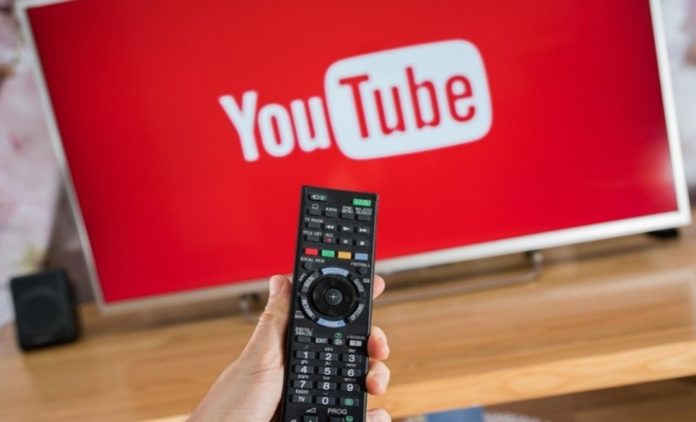Blocking YouTube Channels Children Should Not Watch
YouTube, a popular video-sharing platform, is widely used by all age groups. However, not all content on YouTube is suitable for young viewers. To protect children from harmful content, parents can block inappropriate channels. This guide provides comprehensive instructions on how to block YouTube channels to safeguard children from potential dangers posed by the platform.
Why Parents Need to Know How to Block YouTube Channels
Blocking channels on YouTube is crucial to shield children from content that may be harmful or detrimental to their development. There are several reasons for this necessary measure:
- Inappropriate Content: YouTube hosts a plethora of content, not all of which is appropriate for children. Some videos or channels contain explicit content, profanity, or disturbing imagery. Children often lack the ability to discern between suitable and unsuitable content. Blocking channels can prevent them from accessing content that could be damaging to their minds or development.
- Unsuitable Advertisements: Certain videos on YouTube may be accompanied by advertisements that are not appropriate for children. Knowing how to block a YouTube channel can reduce the likelihood of children encountering such inappropriate ads.
- Time Wastage: Excessive YouTube viewing can easily become an addictive habit. Blocking channels can reduce the time children spend on YouTube, which may otherwise be spent on playing, learning, or other productive activities.
Different Ways to Block YouTube Channels
Blocking YouTube Channels Using Third-Party Content Blockers
If you wish to block YouTube channels using third-party content blockers, numerous tools and browser extensions are available. Here are some methods you can employ:
Using Parental Control Software
/fptshop.com.vn/uploads/images/tin-tuc/179101/Originals/2024-03-09_004214.jpg)
Numerous content-blocking applications and software are specifically designed to assist parents in managing and controlling online content for children. A few examples include YouTube Kids, Family Link, Qustodio, Norton Family, and Net Nanny. On iOS, you can utilize the Content & Privacy Restrictions feature to manage and supervise children’s activities. These applications offer content blocking capabilities and online activity monitoring.
Additionally, some devices and network solutions come with content-blocking features, allowing you to customize settings to block access to specific websites or types of content, such as OpenDNS’s FamilyShield service.
Using Browser Content Blockers
There are browser extensions and content-blocking apps available, such as Blocksi, Cold Turkey, or StayFocusd. These can help you block access to specific websites, including YouTube.
Setting Up Content-Blocking DNS
Setting up content-blocking DNS can assist in blocking access to certain websites, including YouTube. OpenDNS is an example of a DNS service with content-blocking capabilities.
It is important to note that these methods may not completely eliminate all unwanted content, and limitations may apply. Educating children about the online environment is also a crucial part of protecting them.
Using Restricted Mode and the Do Not Recommend Channel Feature
Blocking YouTube channels on a web browser can be achieved through YouTube’s Restricted Mode feature. Restricted Mode helps filter out inappropriate content and can be easily enabled on Google Chrome, Mozilla Firefox, and Microsoft Edge.
Step 1: Open the Chrome browser and go to the YouTube homepage. Sign in to your YouTube account.
/fptshop.com.vn/uploads/images/tin-tuc/179101/Originals/1.jpg)
Step 2: Click on your profile avatar > select “Restricted Mode.”
/fptshop.com.vn/uploads/images/tin-tuc/179101/Originals/2.jpg)
Step 3: Click “Activate Restricted Mode” to confirm and enable content filtering for age-appropriate content.
/fptshop.com.vn/uploads/images/tin-tuc/179101/Originals/3.jpg)
Note that Restricted Mode is not a perfect blocking method and does not work if you are not signed in to an account.
/fptshop.com.vn/uploads/images/tin-tuc/179101/Originals/5.jpg)
Additionally, you can utilize the Do Not Recommend Channel feature available on YouTube to block channels. On the YouTube homepage, click the three vertical dots icon below the video you want to block the channel from posting to open the context menu. In the context menu, select “Don’t recommend channel.” This action blocks the YouTube channel and prevents it from appearing on the YouTube homepage when you open it for children.
Blocking YouTube Channels on TV Using Content Filters
Blocking YouTube channels on TV can be accomplished by utilizing the content filters or parental control features on streaming devices or the YouTube app. Here’s how to do it on Smart TVs (Samsung, LG, Sony, etc.):
Step 1: Access the YouTube app on LG, Sony, or Samsung TV.
/fptshop.com.vn/uploads/images/tin-tuc/179101/Originals/3(1).jpg)
Step 2: On the homepage, navigate to the gear icon (Settings) and select it.
Step 3: Locate the “Restricted Mode” option.
/fptshop.com.vn/uploads/images/tin-tuc/179101/Originals/1(1).jpg)
Step 4: Toggle the switch to “On” to enable Restricted Mode.
You can also follow similar steps as with a web browser to prevent YouTube on TV from recommending channels with inappropriate content. Simply navigate to any video, press and hold the center button on the remote’s navigation circle, and select “Don’t recommend this channel” from the context menu that appears.
/fptshop.com.vn/uploads/images/tin-tuc/179101/Originals/4(1).jpg)
This successfully blocks the YouTube channel on TV.
How to Block YouTube Channels Using the YouTube Kids App
YouTube Kids is an app specifically designed to provide age-appropriate content for children. To block unwanted channels or content on YouTube Kids, you can utilize its content control and filtering features.
On the YouTube Kids App (Mobile):
Step 1: Download YouTube Kids. Open the YouTube Kids app on your phone or tablet. If you have a Google account, sign in to the app to access additional parental control features.
/fptshop.com.vn/uploads/images/tin-tuc/179101/Originals/1(2).jpg)
Step 2: On the YouTube Kids homepage, tap the “Search” option and enter the name of the channel you want to block from being accessible to your children.
/fptshop.com.vn/uploads/images/tin-tuc/179101/Originals/2(1).jpg)
Step 3: On the YouTube channel search results page, you can block the channel directly by tapping the three vertical dots and selecting “Block this channel.”
/fptshop.com.vn/uploads/images/tin-tuc/179101/Originals/3(2).jpg)
Step 4: Alternatively, you can tap directly on the YouTube channel to access its homepage.
Step 5: On the YouTube channel homepage, tap the three vertical dots and select “Block this channel.”
/fptshop.com.vn/uploads/images/tin-tuc/179101/Originals/4(2).jpg)
Certain videos on YouTube may contain advertisements that are not age-appropriate. By learning how to block a channel, parents can reduce the chances of their children encountering such ads, ensuring a safer online experience.
Excessive screen time can be addictive and unproductive for children. By blocking specific YouTube channels, parents can reduce the time children spend on the platform, encouraging them to engage in more beneficial activities like playing, learning, and socializing.
There are several options available, including parental control software such as YouTube Kids, Family Link, Qustodio, Norton Family, and Net Nanny. Browser extensions like Blocksi, Cold Turkey, and StayFocusd can also be used to block access to specific websites, including YouTube.
Yes, setting up content-blocking DNS, such as OpenDNS, can help block access to certain websites, including YouTube. This method can be an effective way to filter online content.
Restricted Mode is a feature offered by YouTube that filters inappropriate content. To enable it, open Chrome, Firefox, or Edge, go to YouTube, sign in, click on your profile avatar, select “Restricted Mode,” and confirm. Note that Restricted Mode requires you to be signed in and may not block all unwanted content.
Yes, YouTube offers a “Do Not Recommend Channel” feature. On the YouTube homepage, click the three vertical dots below the video and select “Don’t recommend channel.” This will prevent the channel from appearing on the homepage when you open YouTube for children.
Access the YouTube app on your Smart TV and go to Settings. Locate and enable “Restricted Mode.” This will filter inappropriate content on the TV. You can also prevent channel recommendations with inappropriate content by navigating to any video, pressing and holding the center button on the remote’s navigation circle, and selecting “Don’t recommend this channel.”
Yes, the YouTube Kids app offers a curated selection of age-appropriate videos for children. Parents can also utilize its content control and filtering features to block unwanted channels or content within the app.
Fast and Easy Ways to Resolve TikTok Community Guidelines Violations
Keeping up with TikTok’s community guidelines is a matter of great concern for many users. It is crucial to be aware of these guidelines while using the platform due to its widespread popularity. In case you unintentionally violate TikTok’s community standards, here are some ways to rectify the situation.



































